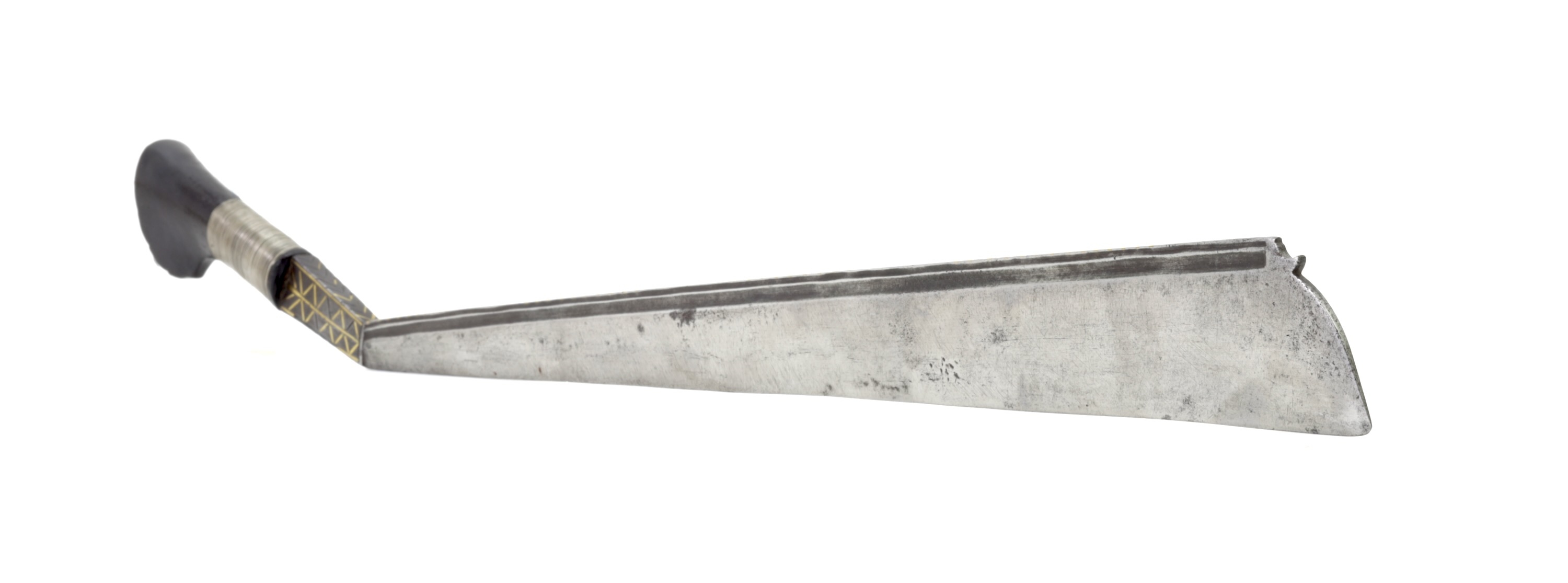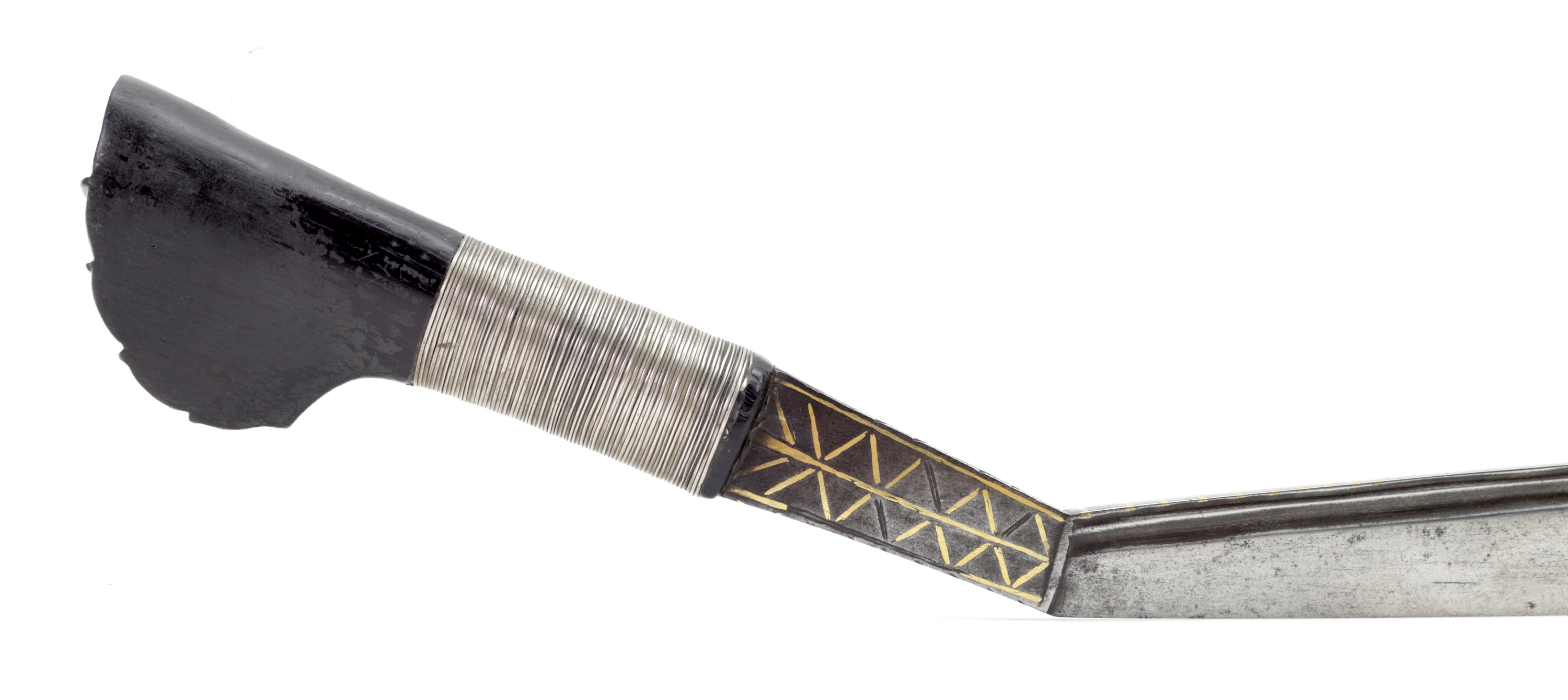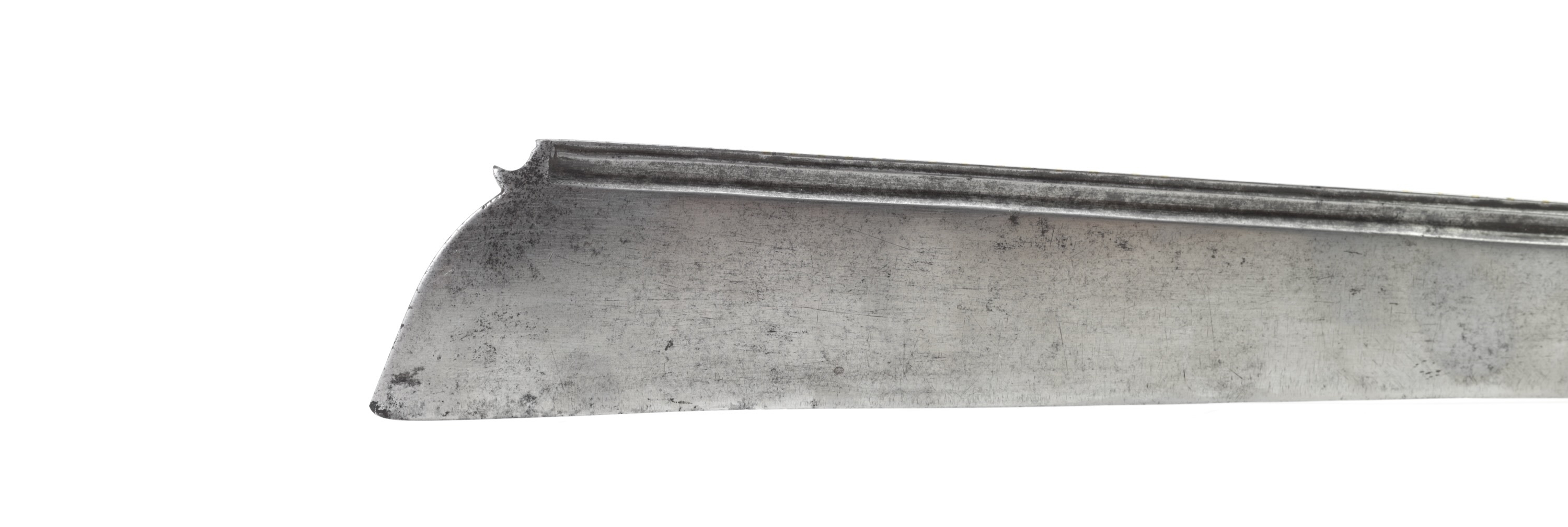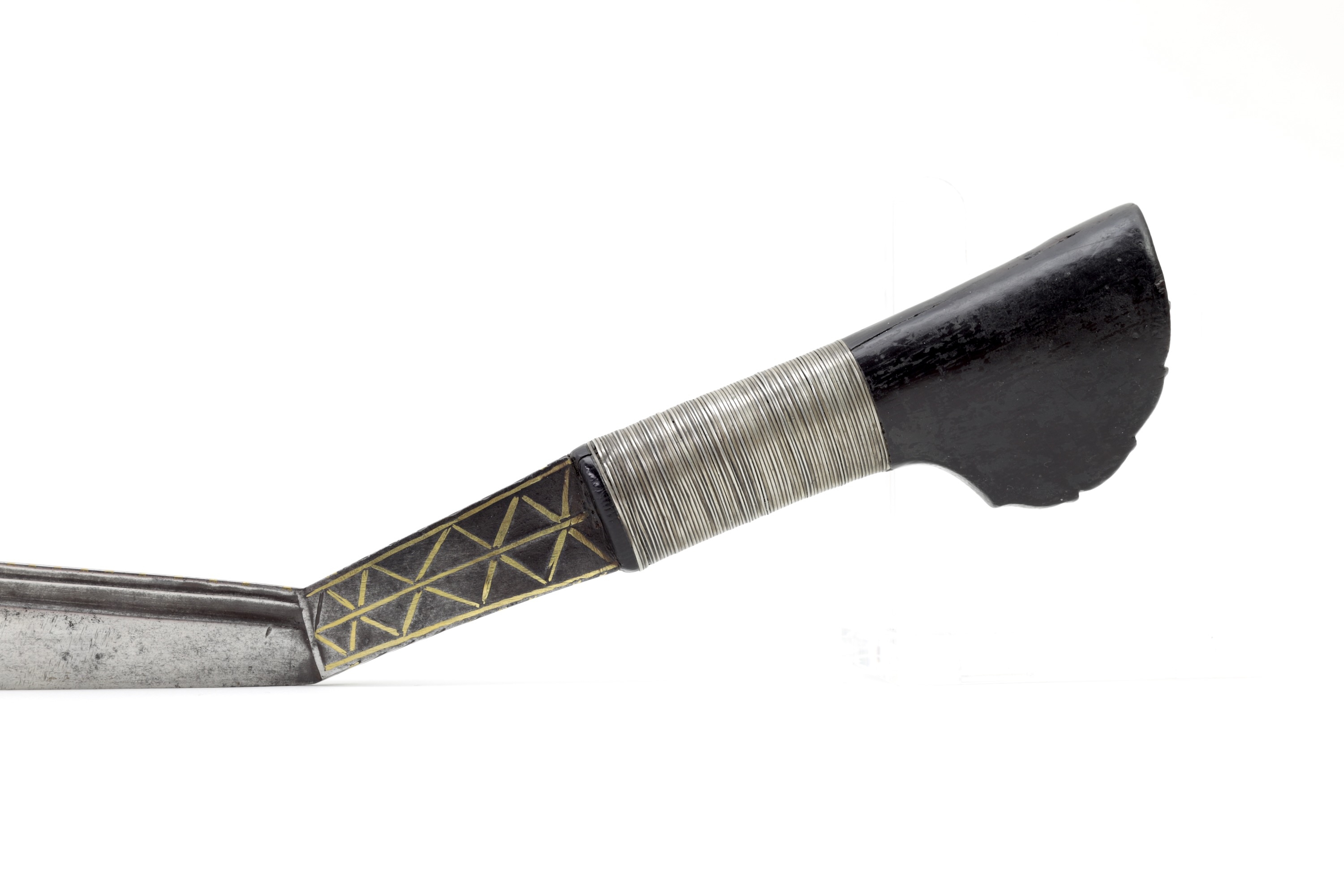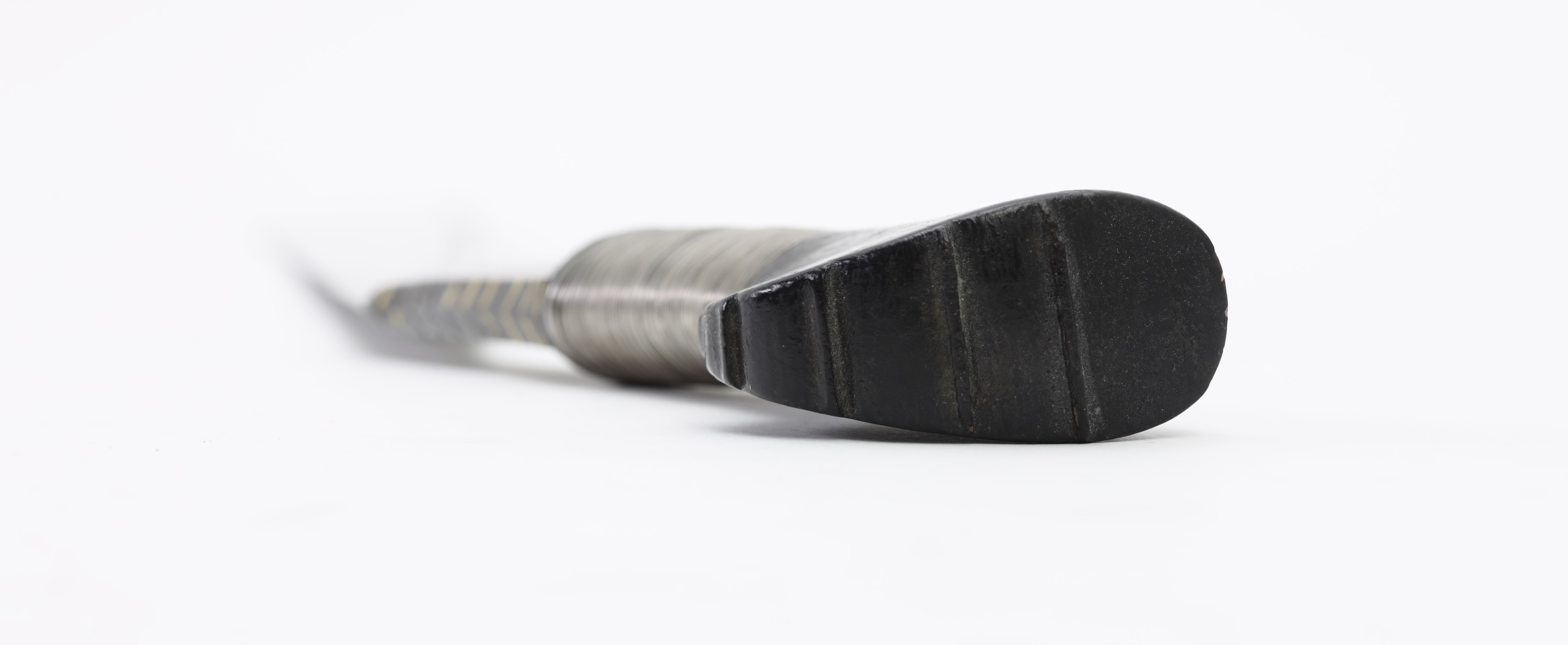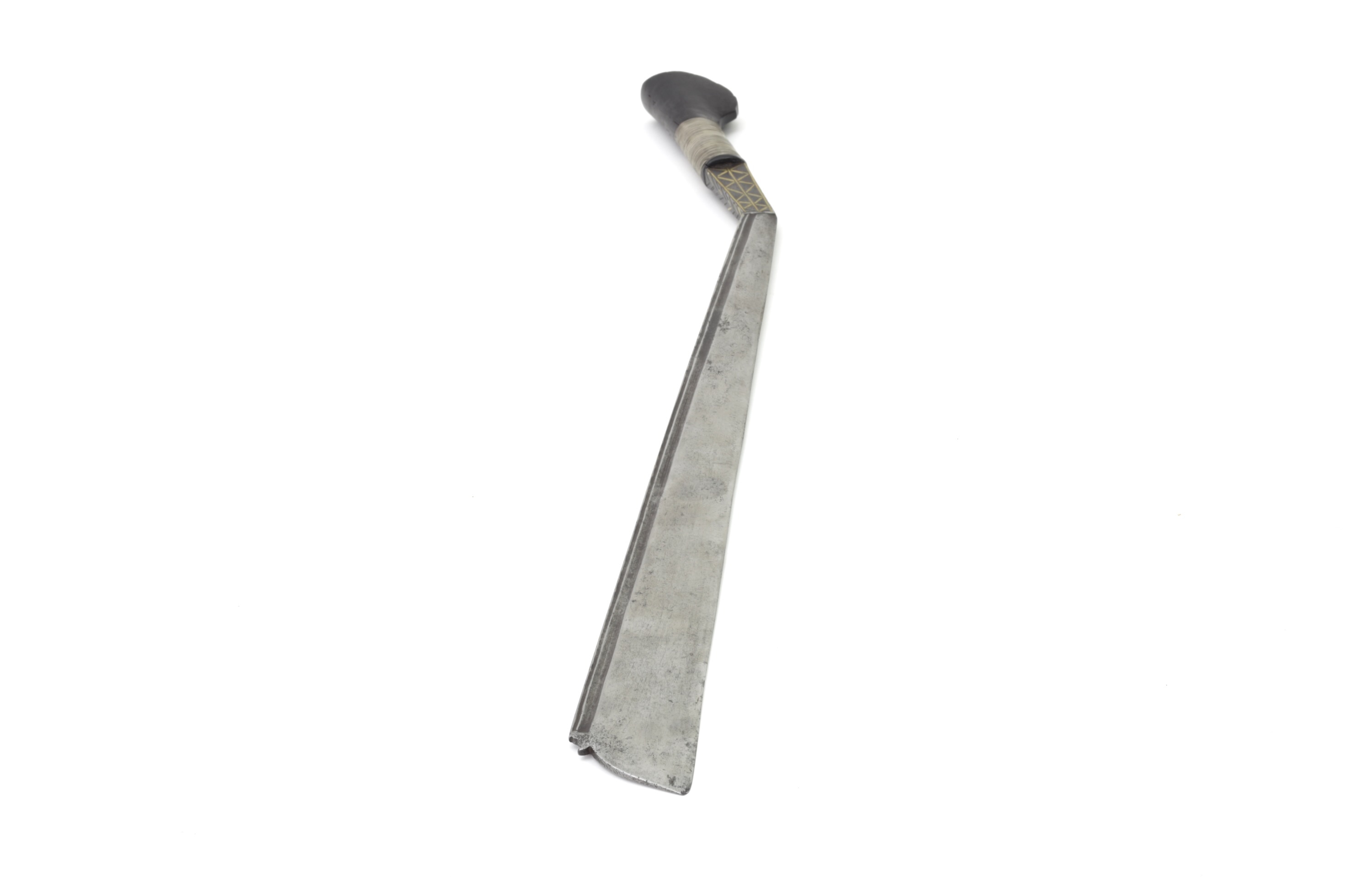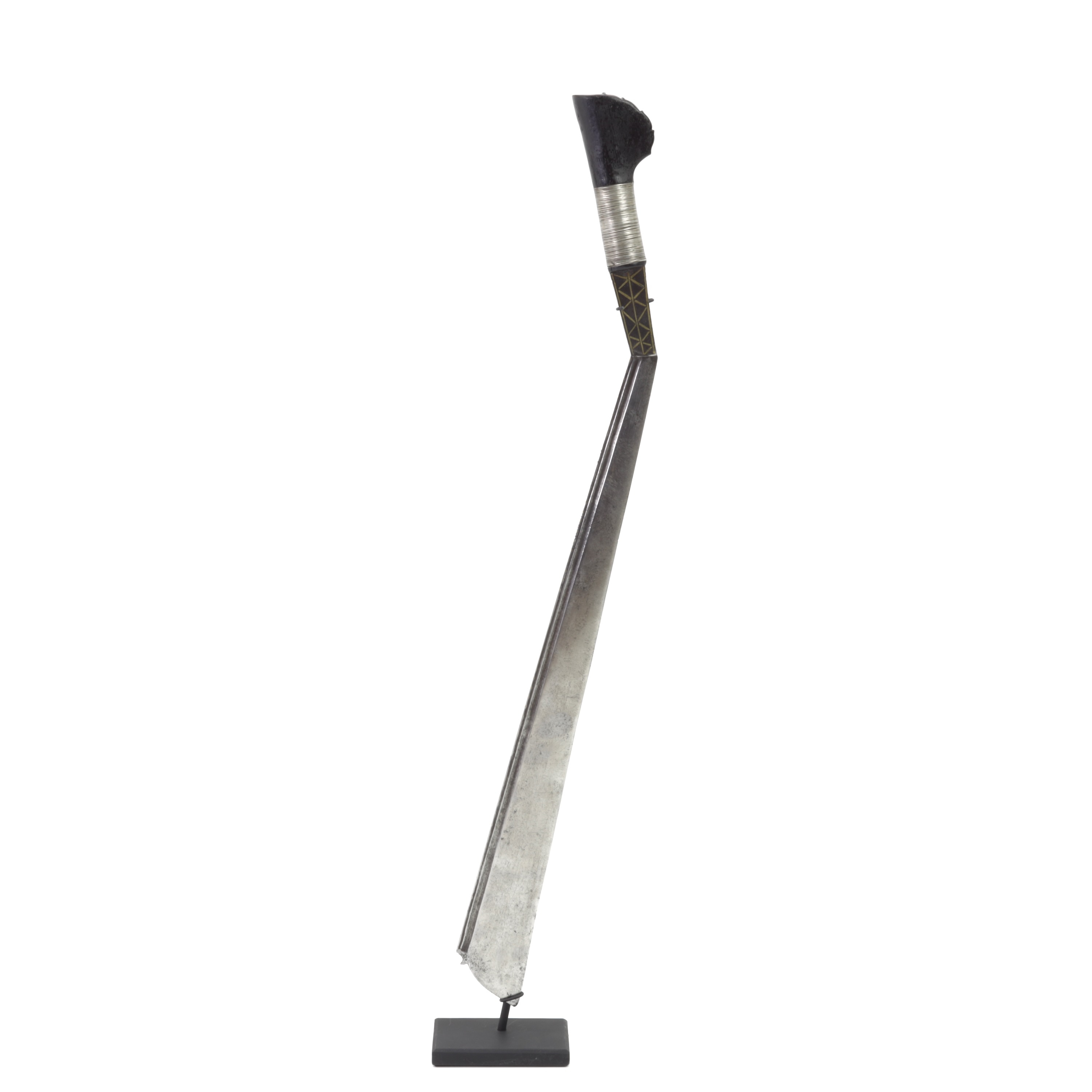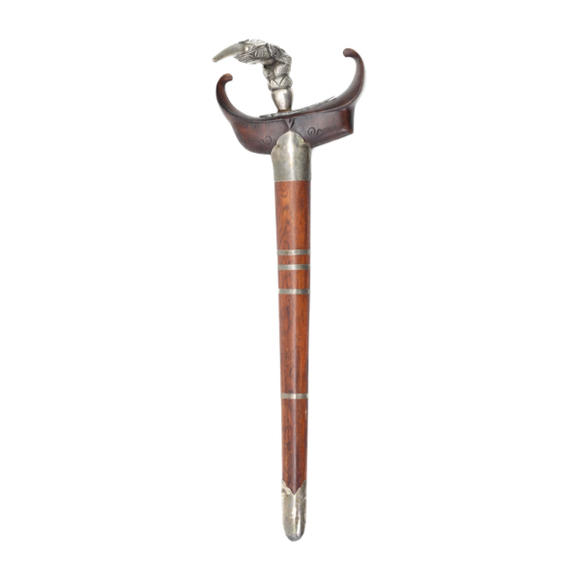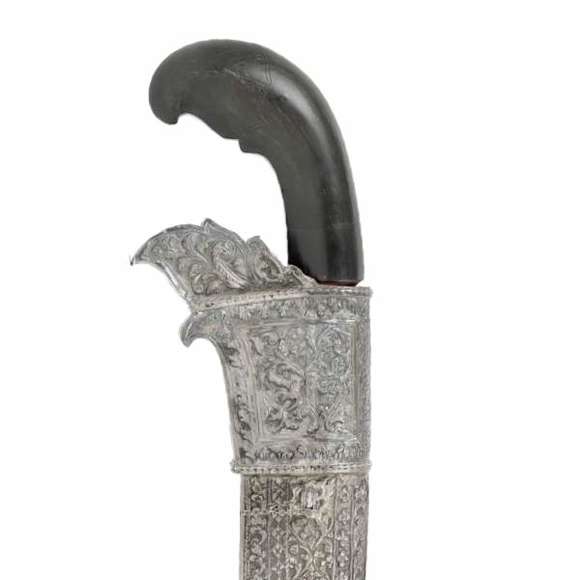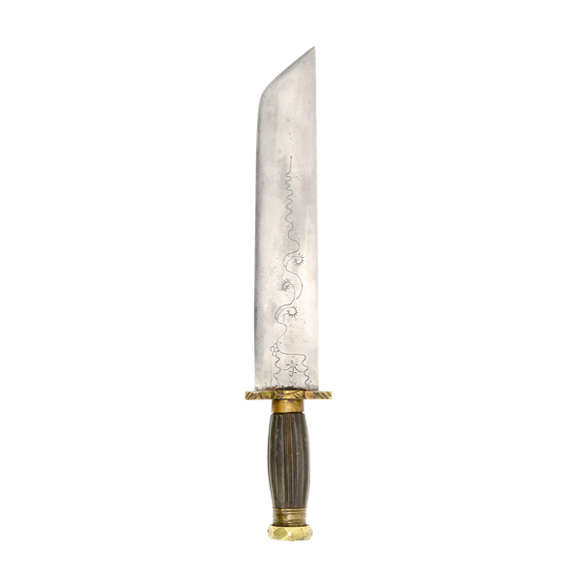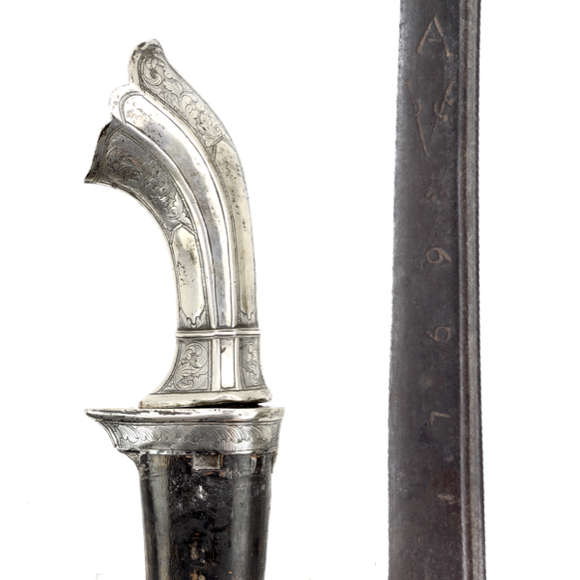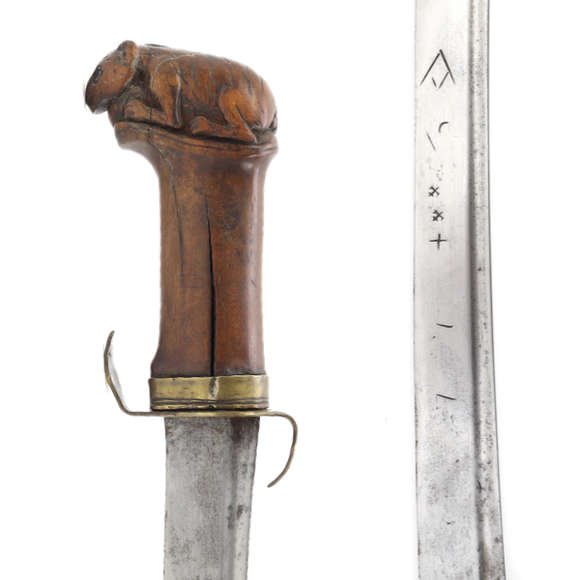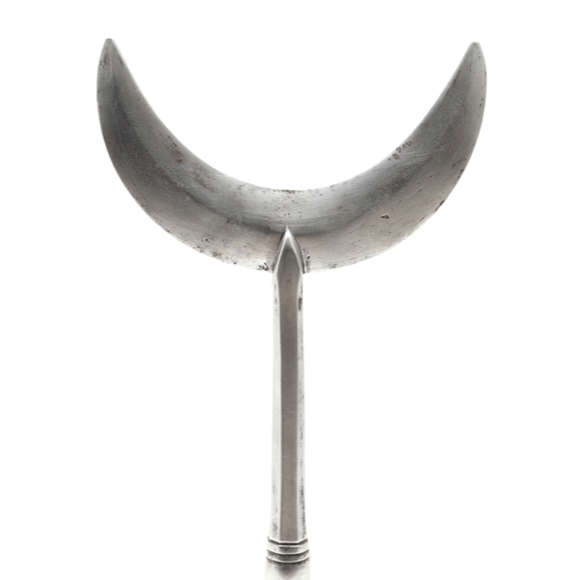A textbook example of this rare and early type of keris.
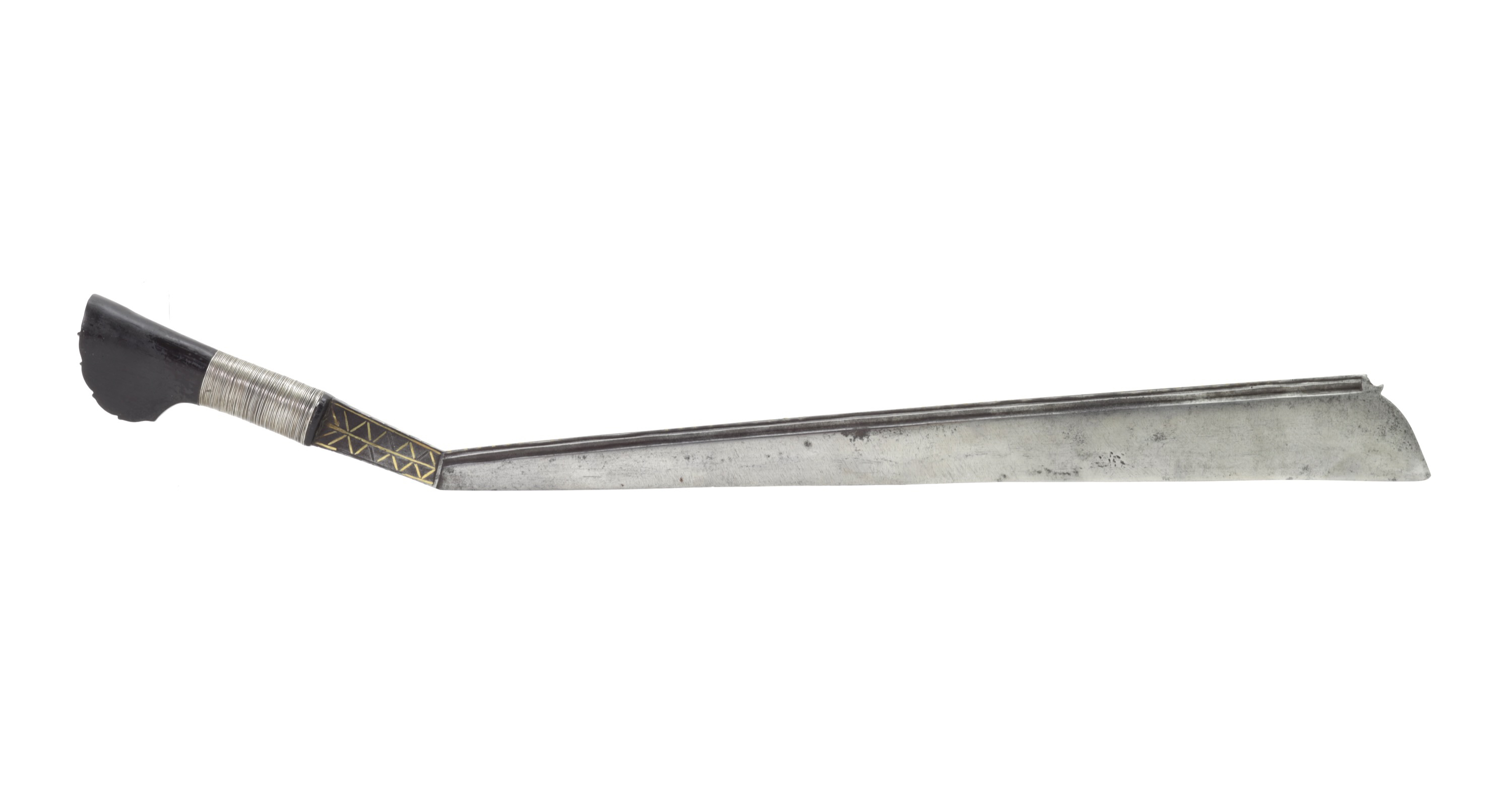
65.6 cm
48 cm
(tip to bend)
Base 11 mm
Bend 9 mm
Middle edge 7 mm
Tip 4 mm
Bend 19 mm
Middle 38 mm
Tip 52 mm
833 grams
15 cm from bend
20 cm from hilt
Steel, wood, silver, brass
Sarawak, Northern Borneo
19th century
Ben Medze
Aalderink Oriental Art
Dick Meyer
Introduction
The parang latok is one of the more curious weapons from Asia. The blade is straight and with a pronounced widening from a narrow base to a rather wide tip. Its defining feature is a sharp bend at the base of the blade.
From a functional perspective, the bend in the hilt makes for a blade that hits later in the swing, so it has more time to accelerate. So its strike is not fast but harder than that of a conventional sword.
It was described by Frederick Doyle in 1865 as:
"...the national weapon of the Sarawak Malays and the Land Dayaks."
They were used as a machete, melee weapon, and execution sword.
This example
A very nice specimen. The blade is heavy and well-made, with clean lines and a precisely cut groove. The spine has brass inlays, and so does the base of the blade, prior to the bend just above the handle. The hilt is made of dark wood, reinforced with silver wrappings. Comes with an upright stand.
A striking piece.
Further reading
For more information, see my glossary article: parang latok

